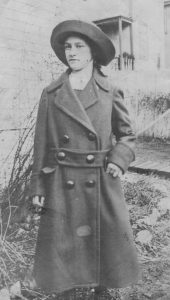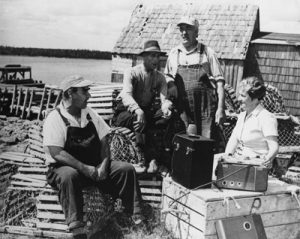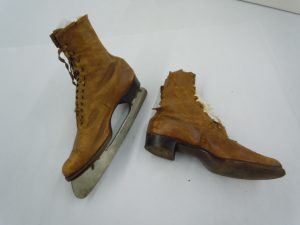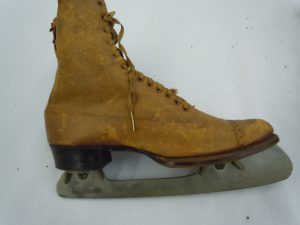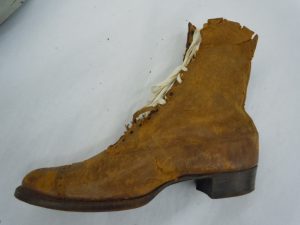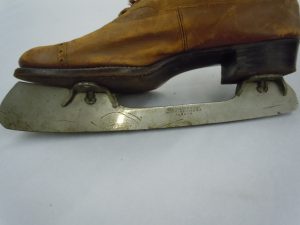Skates of the First Lady of Folklore (Dr. Helen Creighton’s Skates)


Shannon Baxter
by Shannon Baxter
This is the second article in a series that will feature Dartmouth’s Starr Manufacturing Company. Established as a nail factory in 1861, Starr Manufacturing soon began making its famous Starr skates and selling millions of pairs around the world from 1863 to 1939. The plant also played an important role in the sale of the first hockey sticks and excelled in other areas such as the production of the golden gates to Halifax’s Point Pleasant Park.
This pair of ladies Starr Skates were owned by Dr. Helen Creighton (1899-1989), who lived at Evergreen House in Dartmouth for over 50 years, starting in 1920. She is known for her recordings of Nova Scotian folk songs and folklore. She has been hailed as “Canada’s First Lady of Folklore” for her work traveling around Nova Scotia and bringing to light songs such as “Farewell to Nova Scotia”. She also collected ghost stories and tales of folklore and superstitions common in Nova Scotia. These were recorded in two books; Bluenose Ghosts (1957) and Bluenose Magic (1968).
- Dr. Creighton as a young woman (circa 1920)
- Dr. Creighton visiting with fishermen while recording their folklore.
These skates are in the style made between the late 1890s and early 1900s, and it is likely that Dr. Creighton owned them as a young woman.
Dartmouth is known as ‘The City of Lakes’ since there are multiple lakes within the city limits that during the winter months were perfect for ice skating and outdoor hockey games. Some of the more popular spots were (and remain) Sullivan’s Pond, Lake Banook, Lake MicMac, Oat Hill Lake, Maynards Lake, and Penhorn Lake.
Dr. Creighton wrote in childhood diaries how she and her friends would go biking, and spend afternoons at Lake Banook during the summer months. It is clear that no matter what time of the year it was, she and her family remained very active within their community.
Unfortunately, Dr. Creighton’s skates are not in the ideal condition. One of the blades is missing and the leather has signs of deterioration. In order to maintain their integrity henceforth, the skates are now stored in an acid-free box surrounded by and padded by acid-free unbuffered tissue. This, along with minimal handling will help keep the skates safe and decrease the chance of further deterioration. The skates are currently being held at the Dartmouth Heritage Museum’s storage facility.
Want to keep reading? Shannon’s next article in the Starr series, Local Hockey Stars – Charlie Patterson’s Skates. Previous article here.

